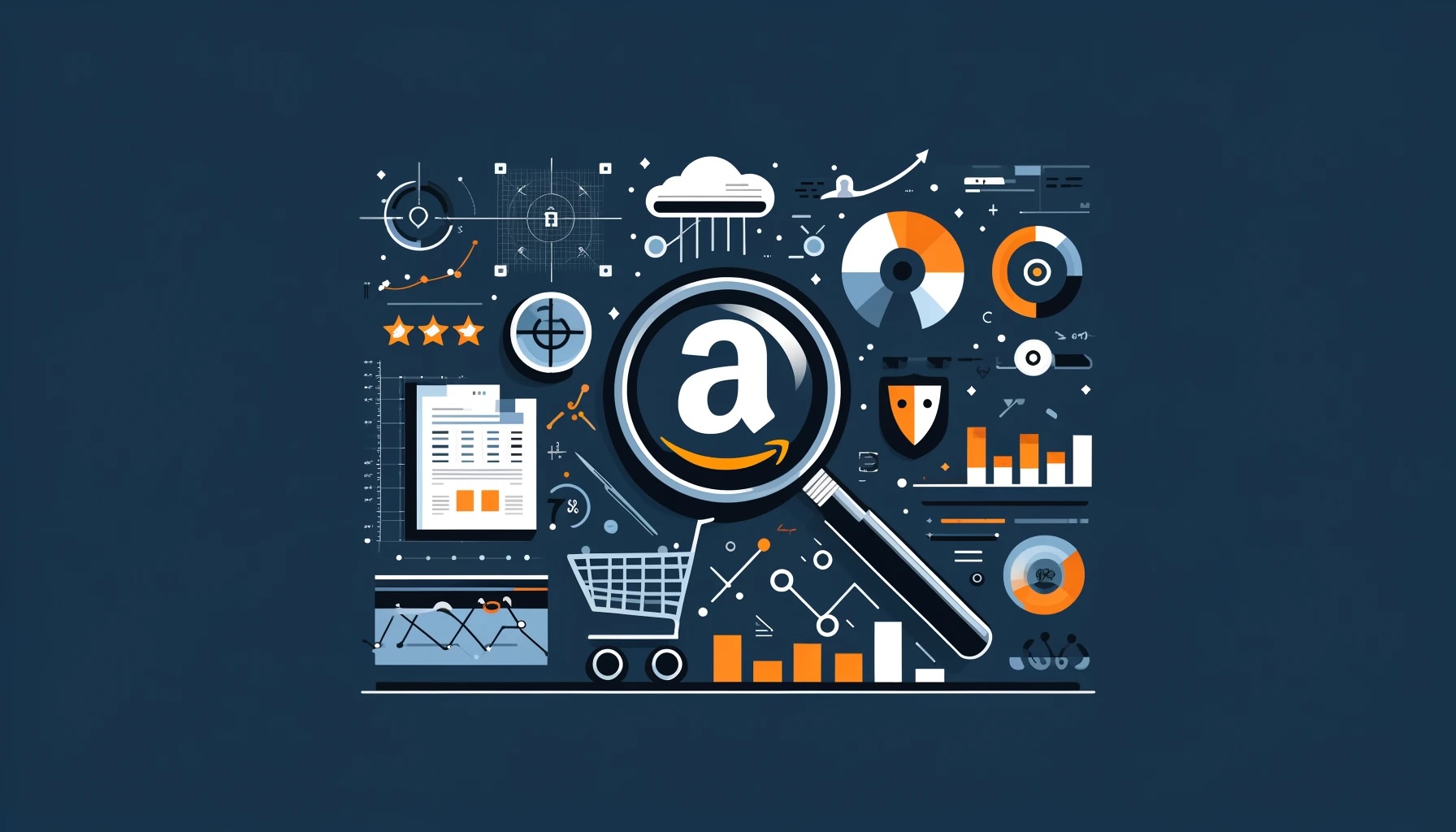The Top Posts on Amazon Success All Missed These 7 Key Strategies!
Differentiating your brand from the competition is critical! Unlock hidden tactics to boost your visibility, sales, and profitability.

Selling on Amazon is a cornerstone for any business looking to expand their reach and drive sales. With over 300 million active customer accounts worldwide, Amazon offers an unparalleled opportunity for growth.
Unfortunately, all of that opportunity is accompanied by fierce competition, making it essential to utilize every available strategy to stand out from the competition.
That’s why there are literally hundreds of blog posts focusing on the best strategies to succeed on Amazon.
We looked at the top 10 blog posts on how to succeed as an Amazon seller and it quickly became clear that while they provide valuable insights, there are several critical strategies that are often overlooked.
This post is about the strategies that ALL those other posts missed!
1. Leverage Amazon Posts to Drive Brand Awareness
Why it’s Important:
With all the emphasis placed on social media these days, it’s surprising that this is at the top of the list.
Much like posting on social media, Amazon Posts is an underutilized feature that allows sellers to share content on Amazon’s platform. It’s a free tool that enables the showcasing of your brand and products in a way that feels organic and engaging.
Amazon posts appear on your product pages and in related feeds, allowing customers to discover your brand and products through organic, visually appealing content.
How it’s overlooked:
Many of these top 10 blog posts emphasize the importance of Amazon PPC (Pay-Per-Click) campaigns and listing optimization. Yes, those are two big pillars of ecommerce success – on ANY platform.
Amazon posts help you establish the kind of long-term customer relationships that supercharge scaling an ecommerce brand.
For example, if you’re selling fitness products, your Amazon posts might feature workout tips, motivational quotes, or customer testimonials. That helps make your brand a source of valuable information, not just a seller of products.
By consistently posting engaging content, you can keep your brand top-of-mind for customers and encourage repeat purchases. Now, Amazon has made it possible for advertisers to “boost” their top-performing image and vertical video Posts into sponsored brands campaigns with a single click.
Ready to Start Growing Your Amazon Brand?
Canopy’s Partners Achieve an Average 84% Profit Increase!
Find out more2. Use Amazon Brand Analytics for Strategic Insights
Why it’s important:
Data represents the beating heart of entrepreneurial success. Importantly, Amazon Brand Analytics not only offers a wealth of data to ecommerce sellers, it’s coming straight from the online-selling giant itself.
Because of that, Amazon Brand Analytics can provide deep insights into customer behavior, search terms, and competitive analysis. Amazon Brand Analytics is available to brand-registered sellers and is instrumental in refining your product offerings, optimizing your listings, and making data-driven decisions for your ad campaigns.
How it’s overlooked:
While many posts mention the importance of analytics, most of them fail to emphasize the strategic value of Amazon Brand Analytics. After all, who isn’t interested in data from behind the curtain of the very platform you’re trying to conquer.
Amazon Brand Analytics allows you to see which search terms are driving traffic to your listings, what your competitors are doing, and how customers are engaging with your products. By analyzing this data, you can identify new opportunities, adjust your strategies, and stay ahead of the competition.
For instance, if you notice a surge in searches for a particular feature or product variant, you can quickly adapt by highlighting those aspects in your listings or even expanding your product line.

3. Implementing a Next-Level Customer Review Strategy
Why it’s Important:
Most sellers are aware that Amazon customer reviews are crucial for building trust, increasing conversions, and improving a product’s visibility.
However, a comprehensive review strategy goes a lot further than simply asking for reviews. It involves actively engaging with customers, responding to their feedback, and using their input to enhance your products.
How it’s overlooked:
Most posts suggest sending follow-up emails or using Amazon’s automated request system to ask for reviews, but that’s where they stop.
A more complete strategy includes using latest generation AI to monitor review trends, respond to both positive and negative reviews, and use these insights to make informed product improvements.
For example, if multiple customers mention that a product’s packaging is difficult to open, or that a packaging label is difficult to remove from the product, addressing the issue can quickly lead to better reviews and higher customer satisfaction.
4. A Great Amazon SEO Strategy Involves More than Keywords
Why it’s Important:
Amazon’s algorithm determines the ranking of products in search results. Yes, keywords have a lot to do with your overall Amazon SEO ranking, but it’s certainly not the only factor. The Amazon algorithm also considers sales velocity, customer engagement, and conversion rates. To truly optimize for Amazon’s search engine, you need to focus on these additional factors.
How it’s overlooked:
A lot of blog posts emphasize the importance of keyword research and placement, but they often neglect other critical aspects of Amazon’s algorithm.
Improving your product’s overall sales velocity through promotions or discounts, improving customer engagement by answering questions promptly, and increasing your conversion rates by optimizing your product pages can all contribute to better search rankings.
For example, running a limited-time promotion that boosts sales can temporarily increase your product’s visibility, leading to a higher organic ranking once the promotion ends.
Ready to Start Growing Your Amazon Brand?
Canopy’s Partners Achieve an Average 84% Profit Increase!
Find out more5. Using Amazon DSP for Retargeting and Brand Building
Why it’s Important:
Often called the best-kept secret in ecommerce, Amazon’s Demand Side Platform (DSP) is a powerful tool that allows sellers to programmatically buy display, video, and audio ads both on and off Amazon.
Amazon DSP is a game-changer for reaching back out – from across the internet – to customers who have shown interest in your products or for building brand awareness across the web.
How it’s overlooked:
Everybody knows about Amazon pay-per-click advertising. It’s ubiquitous. At the same time, the potential of Amazon DSP is overlooked by entrepreneurs, many of them with advanced-level advertising skills.
In a lot of ways, DSP feels like magic. It enables you to reach customers who have interacted with your brand in the past, whether they viewed your product page, added an item to their cart, or made a purchase.
By retargeting these customers with personalized ads, you can increase the likelihood of converting them into repeat buyers. Additionally, DSP allows for broader brand-building efforts, enabling you to reach customers on other websites and platforms within Amazon’s network.
6. Utilizing External Traffic to Boost Rankings
Why it’s Important:
Driving external traffic to your Amazon listings from sources like social media, blogs, and email marketing can significantly boost your product’s visibility and sales velocity. This, in turn, can improve your product’s ranking on Amazon, leading to even more organic traffic.
How it’s overlooked:
A lot of blog posts focus on optimizing all things Amazon. However, external traffic strategies can be forgotten. By leveraging your social media following, influencer partnerships, or content marketing efforts to drive traffic to your Amazon listings, you can create a positive feedback loop that enhances your product’s visibility and sales.
More importantly, many experts feel that off-Amazon traffic has dramatically increased as a significant ranking factor.
A well-timed email, or social media campaign promoting a new product launch can drive a surge in traffic and sales, which Amazon’s algorithm may reward with a higher ranking.
It’s in Amazon’s best interest to reward you for bringing traffic to your Amazon store, why not make it easy for them?

7. Inventory Management – An Ecommerce Brand Killer
Why it’s Important:
It might not be a sexy topic, but effective inventory management is crucial for maintaining stock levels, managing cash flow, and optimizing fulfillment costs.
Bottom line, it keeps your Amazon business afloat.
Amazon offers a built-in metric called the Inventory Performance Index (IPI) that helps sellers assess their inventory performance over time. The IPI is designed to give sellers a clear understanding of their inventory health, enabling them to maximize efficiency and profitability.
As importantly, Amazon keeps a close eye on your IPI and, if you’re falling below a certain score, they’ll limit your FBA storage capacity.
How it’s overlooked:
While most posts touch on the basics of inventory management, they often miss the advanced strategies that can make a significant difference. For example, forecasting demand based on seasonal trends, and using third-party tools to automate inventory tracking can help you avoid stockouts, minimize storage fees, and keep your business running smoothly.
Often missed is the way that massive advancements to AI-driven inventory management tools have significantly enhanced a seller’s ability to forecast demand and streamline operations. It’s easy to place too much focus on sales strategies while underestimating the impact of optimized inventory on overall profitability.
How Canopy Management Can Help
As competitive as Amazon has become, success requires more than just following the basic strategies outlined in popular blog posts. These seven overlooked tactics not only enhance your visibility and sales on Amazon but also contribute to building a stronger, more resilient business.
Want to make sure that you leave no stone unturned in your quest to be the best (ecommerce seller)?
Do what increasing numbers of Amazon’s top sellers have done, reach out to the pros at Canopy Management.
Turns out that when you combine the massive experience of Canopy’s Amazon Experts with smart tools and tech, you get industry-leading results like this:
- 84% Average Year-Over-Year Profit Growth for Our Partners
- 2.7 Billion in Revenue Managed
- 99.1% Partner Retention Rate
Canopy Management is a full-service marketing agency for Amazon and Walmart sellers. Our team consists of former Amazonians, multi-million dollar sellers, and award-winning experts.
When you consider the many ways that Canopy Management can help you grow your business, you’ll see why selling on Amazon is much easier “under the Canopy.”
- Strategic Growth Planning
- Listing Copywriting Optimization
- Listing Photography
- Product Videography
- Advertising Management
- Customer Service
- Demand Side Platform (Amazon DSP)
- Amazon Posts
- Full Service Management
- Amazon Review Aggregation
Ready to Start Growing Your Amazon Brand?
Canopy’s Partners Achieve an Average 84% Profit Increase!
Find out more

